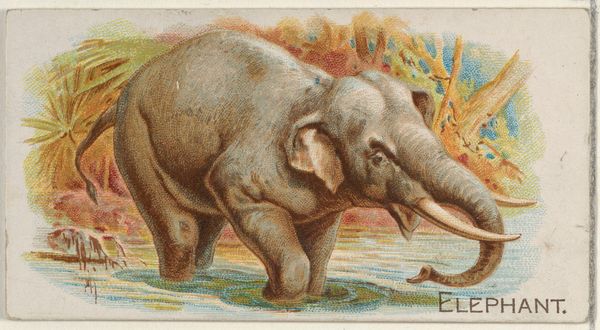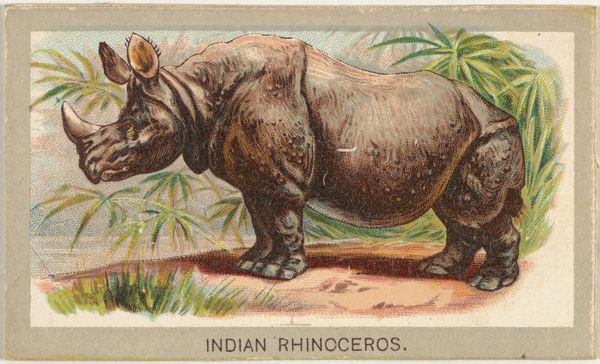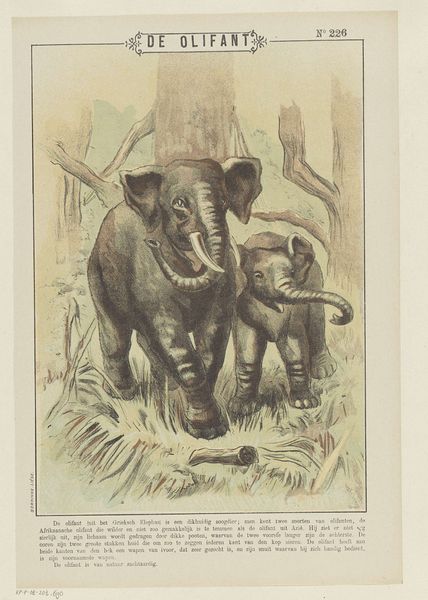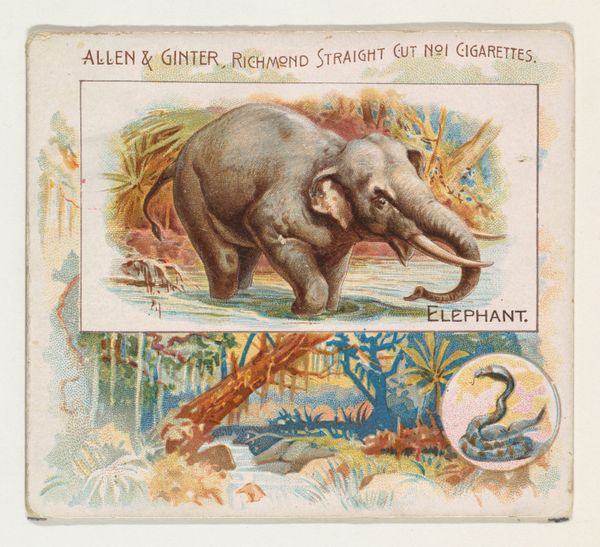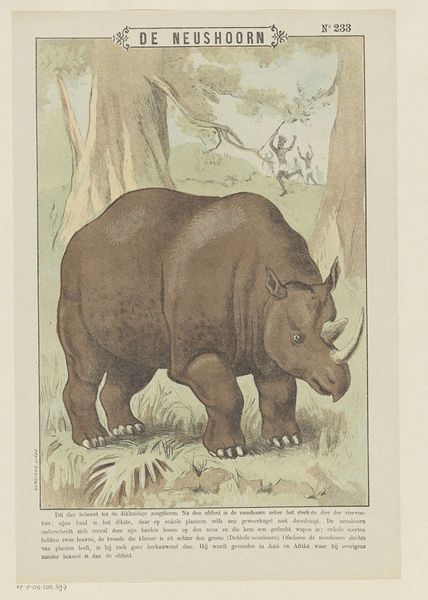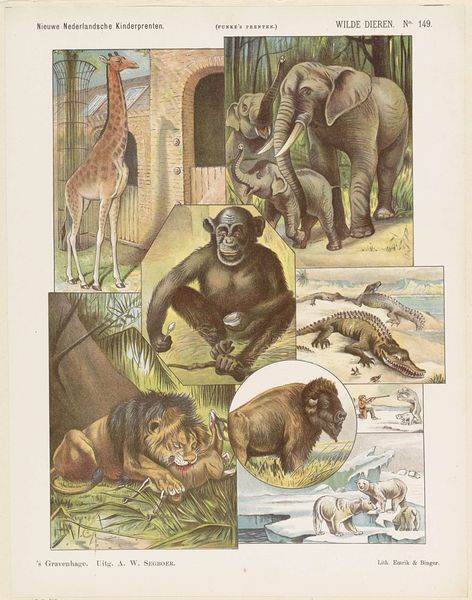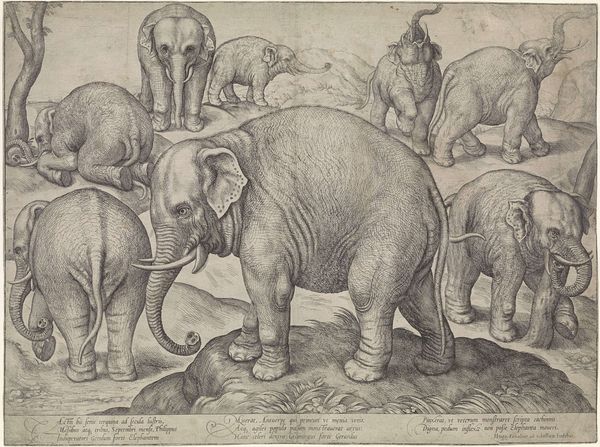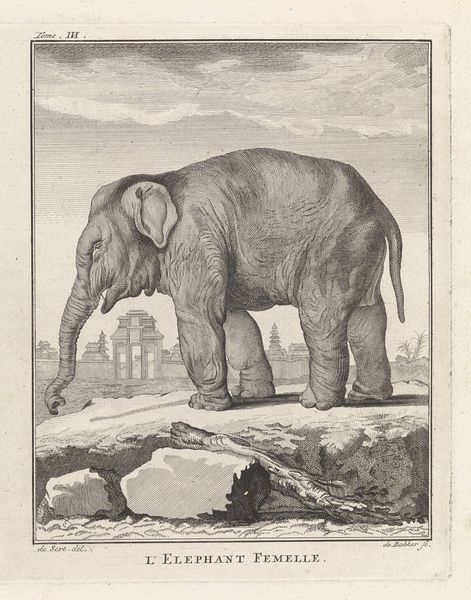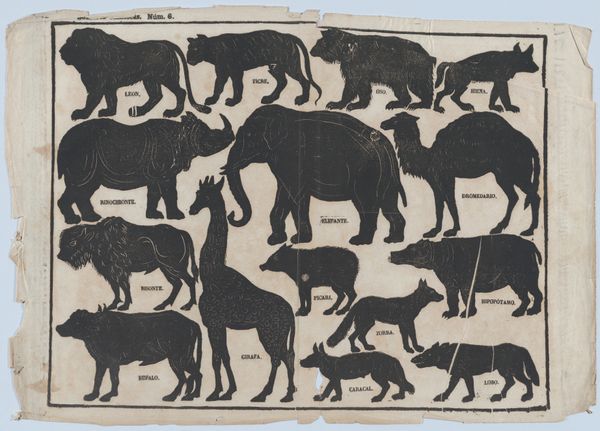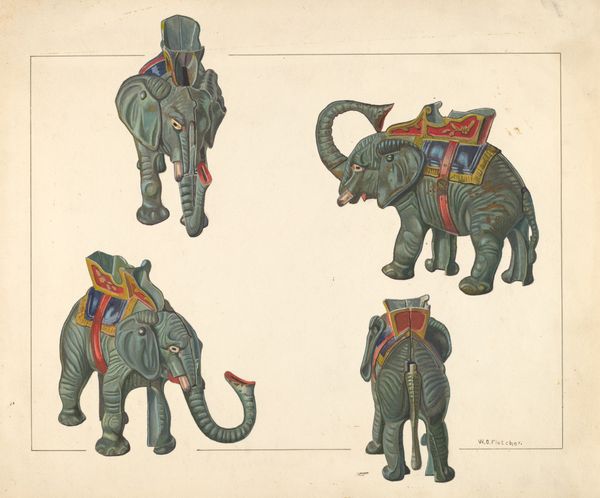
Indian Elephant, from the Animals of the World series (T180), issued by Abdul Cigarettes 1881
0:00
0:00
Dimensions: Sheet: 1 5/8 × 2 3/4 in. (4.2 × 7 cm)
Copyright: Public Domain
Curator: This work from 1881 comes to us from Abdul Cigarettes. Part of a larger "Animals of the World" series, it's a colored-pencil print depicting an Indian elephant. The print captures the animal wading in water, set against a lush, almost dreamlike backdrop. What's your first impression? Editor: The immediate impression is one of a certain romanticism, wouldn’t you agree? There's a definite idyllic quality, the way the elephant is presented feels less about zoological accuracy and more about projecting a kind of exotic otherness. The animal is almost posing, inviting the viewer into an imaginary realm. Curator: Precisely! And that invitation carries considerable weight when considering how cigarette cards functioned within the cultural landscape of the time. They were instrumental in disseminating knowledge and shaping perceptions of far-off lands, with this romantic depiction almost domesticating the 'foreign' elephant. What visual elements do you find particularly striking? Editor: I am particularly drawn to the ukiyo-e influence, apparent in the line work. It's as though the cigarette company was attempting to introduce elements of refinement and artistry to a commonplace commercial item, elevating the experience. Of course, we must also remember the politics of display here. How the animal is perceived changes according to place, with some societies favoring it as an auspicious signifier and others viewing it more ambiguously. Curator: Indeed. The cultural associations are rich and varied, shifting depending on the viewing audience. It seems Abdul Cigarettes wanted to align themselves with something considered cultured. It adds an aspirational quality, doesn't it? A small token meant to imply a worldly sophistication within reach of the average consumer. Editor: Definitely! In terms of design, there's the clever incorporation of watercolour washes, which lends the scene an air of fantasy, while reinforcing certain power dynamics via the cigarette company using 'exoticism' to push its product. It really invites a deeper consideration of image-making as a carrier of ideologies. Curator: Thinking about the impact on consumers back then makes this more interesting to me. Cigarette cards became little windows into worlds previously unknown. While maybe simplistic and inevitably biased, they still sparked a sense of wonder. Editor: For me, examining such images lets us think about consumer culture not simply as it existed back then, but also consider our contemporary viewing habits. We should consider which cultural patterns this image helped initiate, whether inadvertently or not.
Comments
No comments
Be the first to comment and join the conversation on the ultimate creative platform.
